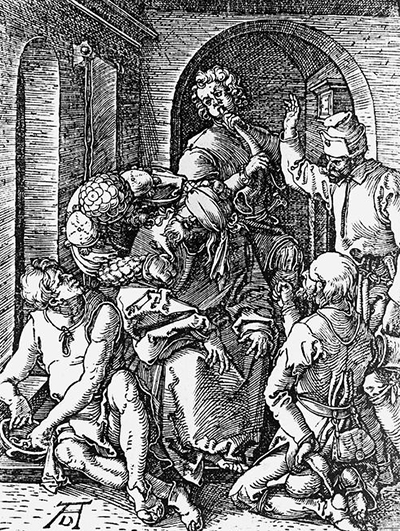The Mocking of Christ by Albrecht Durer was created in 1612 and has so much meaning than a naked eye can see. Albrecht was a renowned German artist who spent most of his time creating wood carvings and paintings. During his prime, he shared many messages with great Italian painters such as Leonardo da Vinci and Raphael Giovanni Bellini.
The artwork is based on biblical scripture. The scripture reads that some people started to spit on Jesus Christ. Some of them mocked and covered his face while saying nasty things to him. Jesus was mocked when some guards hit him with the palm of their hands. Thus, Jesus is the central focus of the composition. If you look at the picture, you will see that he is symbolically and worn down. In the picture, Jesus' posture denotes defeat and lack of adequate energy. He has a gripped finger that denotes the internal turmoil that he was undergoing at that moment. There are figures around the scene, and Durer ensured that they are evenly balanced to march the event's architectural setup. There are arched doorways that show a fading background. But clearly, Albrecht only focused on what Jesus was undergoing.
If you are a true fan of Albrecht Durer, you will know that he was a strong Christian. He believed that Jesus died on the cross to save Christians. Most of his artwork is based on the main events in ancient times that had much meaning to both modern and early Christians. The Mocking of Christ, for instance, is a sure indication that Durer believed that Jesus was undergoing a tough time that only he could explain. An observer could only imagine the degree of pain and brokenness he experienced before being crucified. The picture is not a very big one, but it contains details that make it easier to describe.
Durer was born and raised in Nuremberg, Germany. His passion for arts started to show at an early age. His father was against his artistic skills and wanted his son to become a goldsmith. However, that did not deter Durer from pursuing his dream, for which he is remembered to date. He attended school like any other kid at that time and served as an apprentice. In his early and late 20s, he gained popularity in the region as a skilled artist who could pass strong messaged through paintings and carving.




